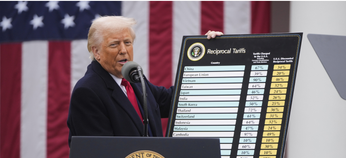
Can we trust Russian economic statistics?
Since the start of the war, the Russian authorities have classified heaps of important statistical and economic data. For the third year in a row, Moscow is not publishing figures on imports, exports, foreign trade, gold and foreign exchange reserves, or oil production. But can the data that Moscow still churns out be trusted?
- The clampdown on information about the Russian economy remains in full force, with authorities having removed almost 600 data sets from the sites of government agencies since February 2022. Historical data sets are also disappearing, including information on officials' salaries, government procurement and migration, to name a few.
- In these circumstances, many commentators are inclined to question the reliability of that which remains. For example, independent Russian researchers doubt the quality of the data on poverty levels and the number of Russians that meet the “subsistence minimum,” a gauge of the lowest level of income required to purchase basic necessities. The Stockholm Institute of Economics, which produced a report into the current state of the Russian economy at the request of the Swedish authorities, accused Russia of widespread manipulation of the data, suggesting that GDP did not, as reported, grow by 3.6% in 2023 but fell by anything from -1.7% to -10.8%.
- The Bank of Finland’s Institute of Developing Economies (BOFIT) has now published its own research into the reliability of Russian statistics. Senior economist Heli Simola analyzed Russian economic data published before and after the invasion and concluded that, despite some oddities, there is no evidence of widespread manipulation.
- Simola analyzed 31 data sets, from salary dynamics and corporate profits to the cost of Urals oil and federal budget expenditures. She checked them for compliance with Benford’s law, which has long been used successfully not only to identify manipulations in macroeconomicdata, but also in bookkeeping and trade. She also checked the relationships between economic variables (for example, income/consumption, and investment/construction) as well as comparing Russian trade figures with those published by the corresponding countries.
- The analysis found that Rosstat’s information was and remains fairly accurate. But Simola noted the uncertainty that emerged after the invasion of Ukraine in the monthly and quarterly budget data publishedby the finance ministry and the Federal Treasury. These stats ceased to follow Benford’s Law and also lost their previous relationship with other economic indicators. This might prompt questions, but it is too early to draw reliable conclusions. The war and the massive growth of state military spending could cause statistical discrepancies that have nothing to do with manipulation.
Why the world should care
The Russian government is still savvy enough to realize that without some reliable statistics, a basic market economy cannot function. This means third-party researchers can still rely, to some extent, on Russian data and analyze it to assess the state of the economy — something we do every week in our special economic newsletter.



PAID SUBSCRIPTION LAUNCH
From May 1, 2025, The Bell in English will no longer be free
From May 1, 2025, all The Bell’s newsletters and online content will be behind a paywall. We have taken this decision so that The Bell can remain financially independent, and maintain our high standards of journalism and economic expertise






